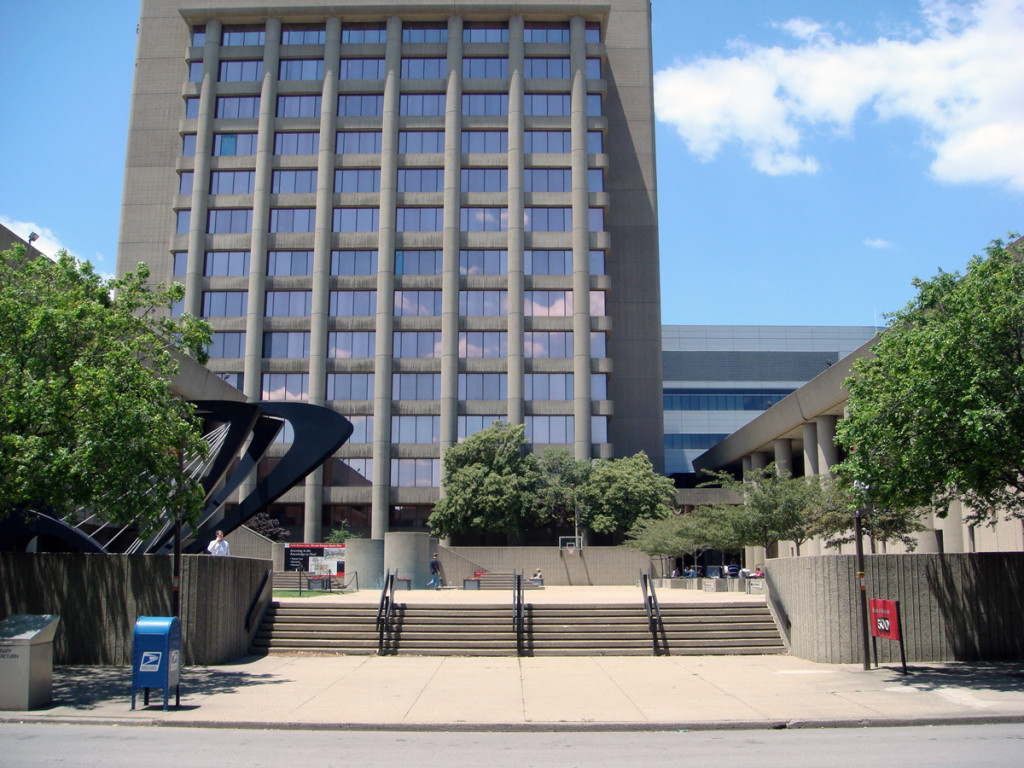By Simon Isham—
U of L’s medical school was recently denied funding for a new medical instructional building on the Health Sciences Campus, but Dean Toni Ganzel said this will not prevent the school from complying with the Liaison Committee on Medical Education’s verdict that the instructional facilities are inadequate.
“We didn’t depend on that to address our issue, because, quite honestly, when the LCME representatives left, they didn’t think our facilities were adequate to support a contemporary curriculum. And at that point, I said to our leadership group, ‘We are not going to get a new building in two years. It’s just physically impossible, even if they approved it today. So we really need to take a different approach. Let’s get our architects back in here and see if they can take a look at our existing building and see if we can do a major renovation in that building and accomplish the goals that we need to accomplish to really be able to support that kind of program,'” she said.
“It turned out that the whole north half of the building didn’t contain those load-bearing walls, and that allowed us to basically completely gut that on each floor, and build a wonderful new, contemporary educational space … The students had input into the design, and faculty had input, administration had input, and it was really a wonderful collaborative project. I think we are still going to need the other educational building, but I really see that now repurposed into an interprofessional educational building and conference center. But in order to meet the LCME requirements, the current renovation plan will do that.”
Ganzel said that the current renovation will be finished before students return to campus in August. The official timeline for the project has it finished by the end of July.
In March, the LCME informed the medical school that it would be placed on probation as a result of a visit by LCME reviewers in April 2013. The reviewers noted the following problems pertaining to the facilities:
- “There were concerns with the student lounge and the library study environment. Upgrades to the student lounge were in progress at the time of the survey visit. There are plans to increase study space in the library.”
- “… 22 percent of all students are dissatisfied with the library hours.”
- “Both faculty and students note problems with the educational facilities. A significant proportion of the student body is dissatisfied with the lecture hall facilities due to the number of seats, an insufficient number of electrical outlets to support laptops, intermittent technology failures during educational sessions and environmental room control. Current auditoria seat 160 for (a first-year medical student) class of 164 … Faculty expressed concern about the adequacy of small group rooms.”
- “… over 25 percent of third- and fourth-year medical students express dissatisfaction with storage space, with only 44 percent satisfied.”
- “… only 57 percent of students were satisfied with the student lounge.”
- “The main instructional building for the school was built in 1970 and last renovated in 2003. The team toured the facilities and concluded that the education facilities may not be adequate … The library was built in 1970 and has not been renovated since the initial construction.”
- “The main instructional facilities for first- and second-year medical students are dated and do not provide adequate space to accommodate the entire current class size … Specific mention is made of crowding during examination situations and failed electronic facilities during class sessions. The ventilation of the anatomy laboratories is described as ‘substandard’ … The current audiovisual system frequently malfunctions.”
- “The greatest collective concern, noted in the free text comments, regarding facilities, was the overall lack of cleanliness and maintenance, which includes excessive garbage, in study areas and restrooms, and poor maintenance of the hallways, labs, lecture halls and restrooms.”
- “Several students expressed a desire that security surveillance cameras be placed in the instructional buildings for times of late-night studying.”
The Cardinal did not receive any of the many appendices to the report.
The Cardinal also placed an open records request with the university for any and all construction-related request for proposals for the Health Sciences Campus made the visit. An RFP is used to invite bids from contracting companies to complete specific jobs. The request yielded nine documents, two of which were related to classroom and study facilities.
HSC leadership plan to renovate the study rooms in Kornhauser Library and to construct classrooms in the School of Medicine Instructional Building. The Kornhauser RFP is dated Jan. 3, 2014. The Instructional Building RFP is undated.
In Kornhauser, the plan is to develop “five new small group study rooms within the existing Kornhauser Health Sciences Library.” Prefabricated walls will be used to turn an open study area into the five rooms. Plans for electrical work for an 4,000 square foot open study area are also mentioned.
In the Instructional Building, the plan is to renovate “a portion” of the building. “This project will construct lecture halls and small group teaching space on the north half of the first and second floors. The total project is approximately 1,100 (net square feet) per floor.”
The RFP notes that the construction must operate on a tight timeline, from mid-May to the end of July, so that it coincides with summer class break.
Constructing an entirely new, 51,000-square foot instructional building on the HSC has been a high priority for the university for years. In its 2010-2012 plan submitted to the state legislature, the building was listed as the fourth priority and was estimated to cost $42.4 million, the full amount of which would come out of the state’s budget. The plan was denied that year, and the support requested from the general fund has only increased since.
In U of L’s 2012-2014 plan, the building was listed as the second priority, and was estimated to cost $67 million. The size of the building had increased to 81,000 square feet, and the reason given for the increase in price was the addition of these 30,000 square feet and “inflation.” The summary of the construction, provided by the university, included:
- The construction of two large lecture halls seating approximately 200 students
- A series of smaller seminar rooms
- Computer testing facilities
- A new Gross Anatomy Instructional Laboratory, which will support an increase in class size in both the Medical and Dental schools, and will allow the display of MRI, computer tomography and x-ray images
- An expansion of the existing instructional space, and renovation of smaller group spaces
- “Modernization” of the Kornhauser Library
One planned renovation to the Kornhauser Library has already been completed.
Earlier this month, the most recent General Fund request said the project had grown to $71. 7 million, of which half would be provided from the General Fund and half would be provided by U of L. It was one of the first items cut from the budget by the Senate, though 166 other U of L-specific projects will be funded.
One of these projects was a new classroom building on the Belknap campus, the university’s top priority for funding. Ganzel hopes that the new HSC building will now be the top priority at the next biennial general fund budget session.
If built, the new building will be located between the current instructional building and Kornhauser Library. The building will replace some of the courtyard, with the fountain being removed.
Dr. Peter Hasselbacher, a former member of the U of L School of Medicine faculty, and a former member of its accreditation board, said he thought that the construction plans sounded as if they were heading in the right direction.
“The trend in medical education is going away from lectures to small group learning and self-instruction. And they just didn’t have the facilities for that. They need more places for students to study together, like law students do. There’s a trend for that in medicine, and that’s another reason why the old facilities were inadequate, not just having enough seats for the behinds, not just having enough plugs for the computers. It’s a change in the way that medicine is being taught now,” he said.
Here are the links to the documents that the Cardinal obtained via FOIA request from the university, pertaining to the LCME’s decision to place the medical school on probation:
- The original LCME report that placed the UofL medical school on probation (undated, but pursuant to the April 14-17, 2013 survey team visit).
- A letter from Dr. Ganzel, appealing the probation decision (dated Nov. 7, 2013)
- A formal report appealing the probation decision (dated Jan. 28, 2014)
- The LCME’s reaction letter to the reconsideration report and subsequent hearing (dated March 13, 2014)
- The floor plans for the renovations in the instructional building
- Renderings of the new building can be found here and here.





